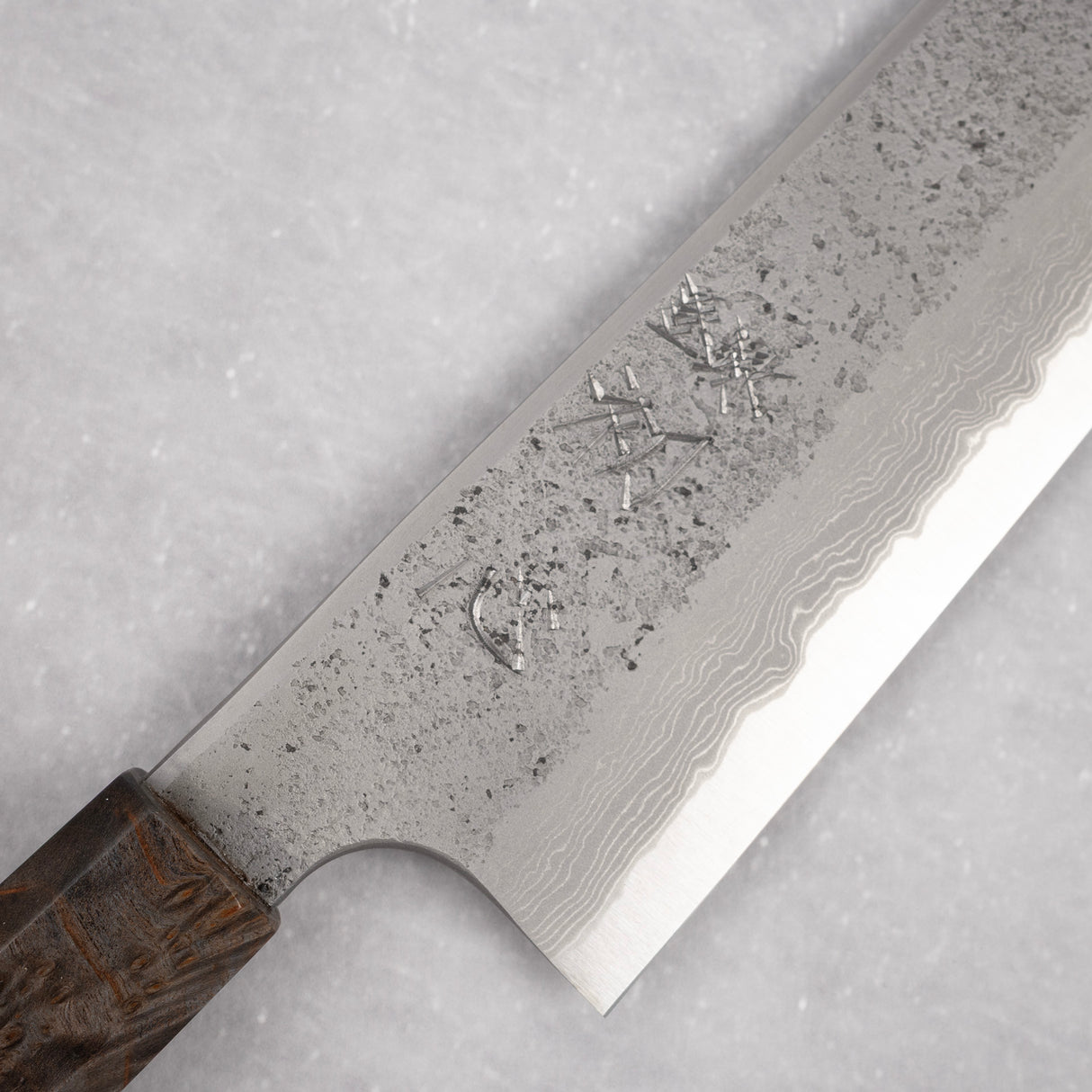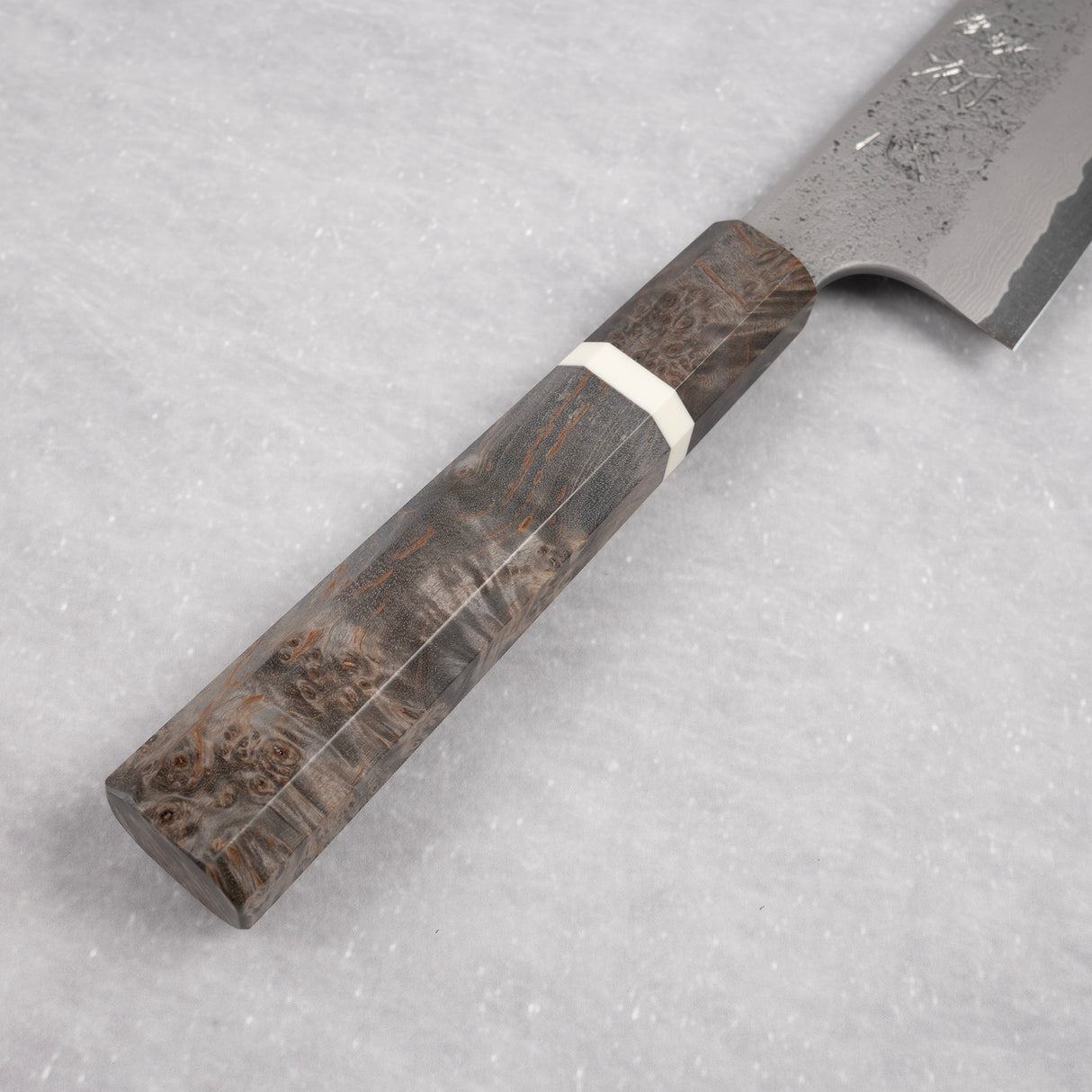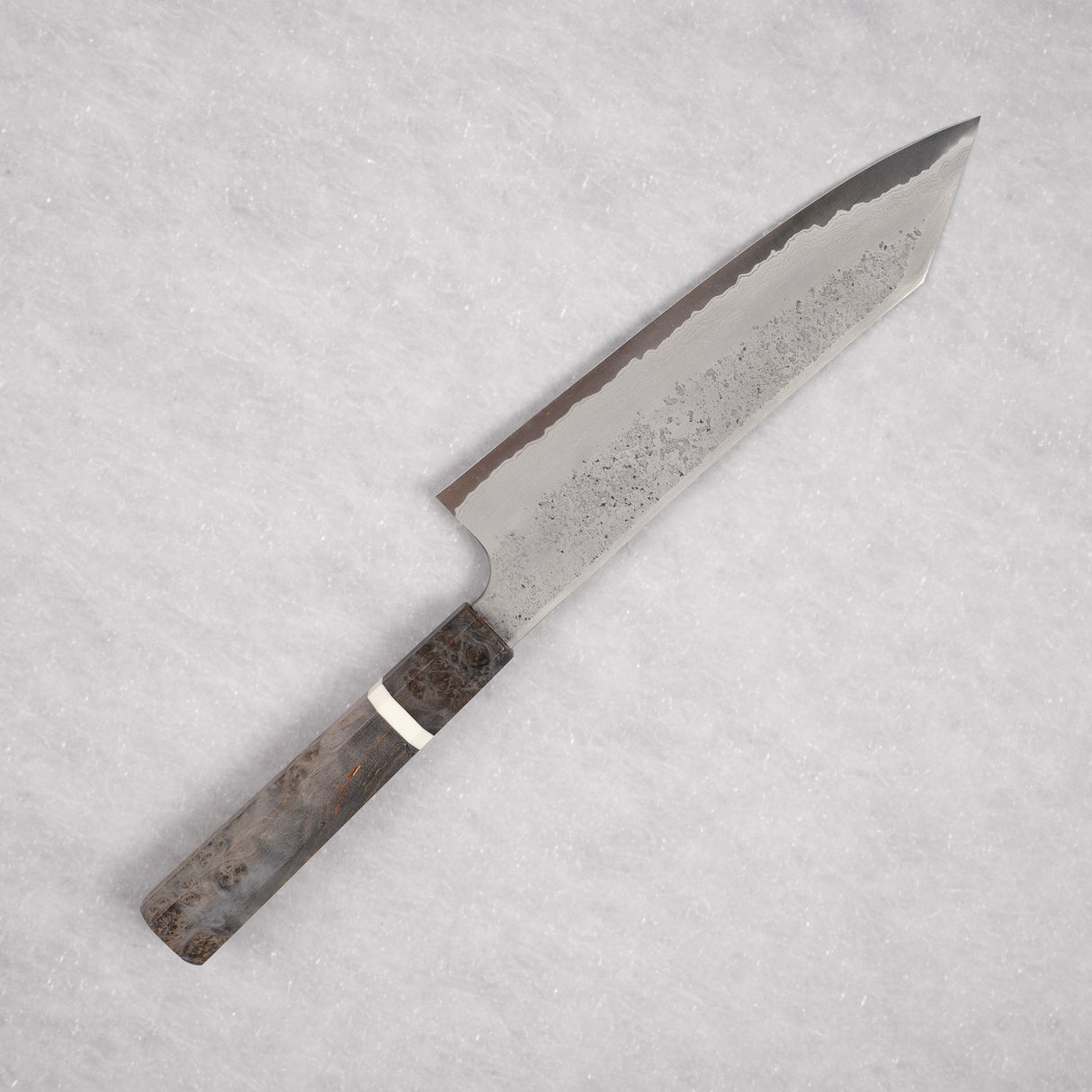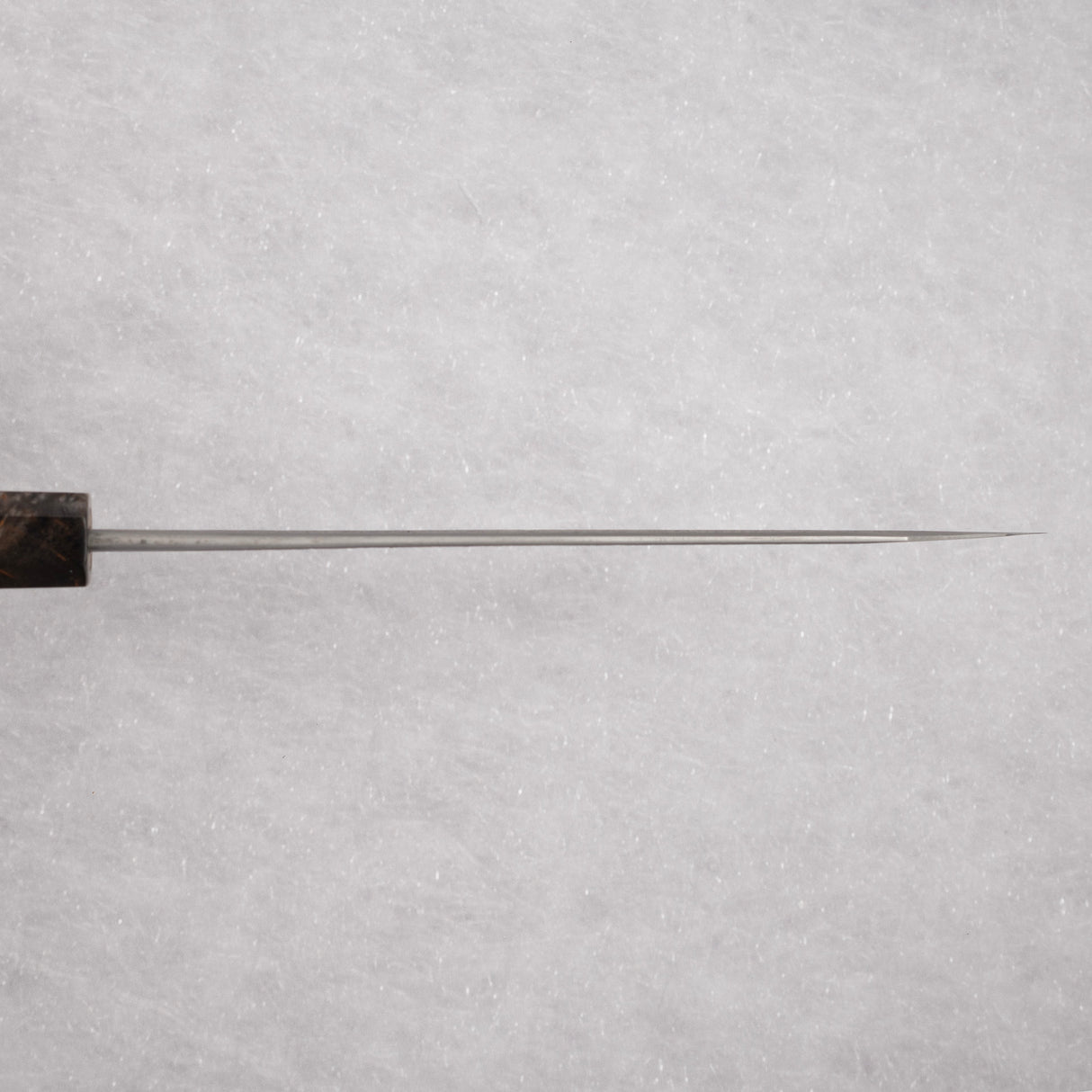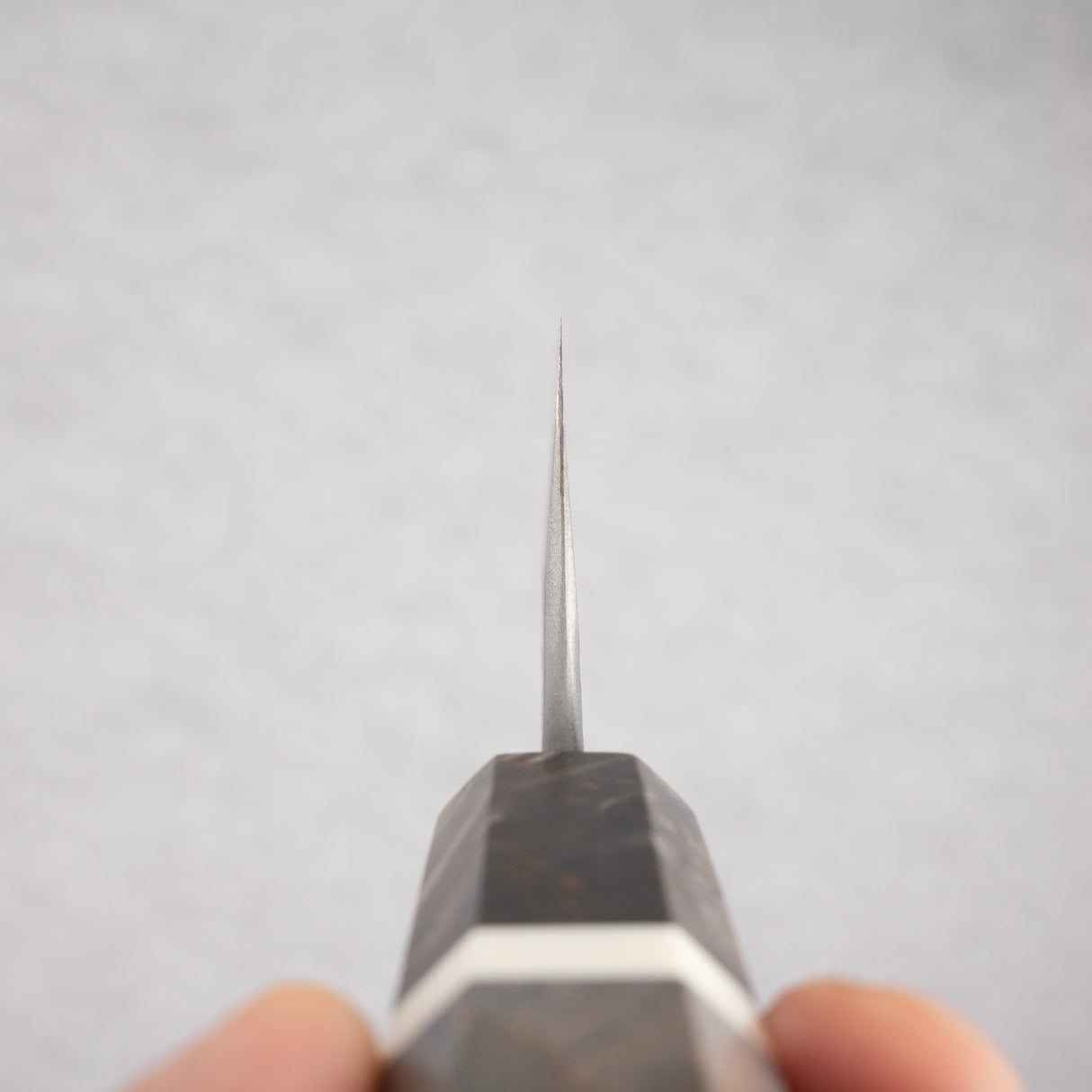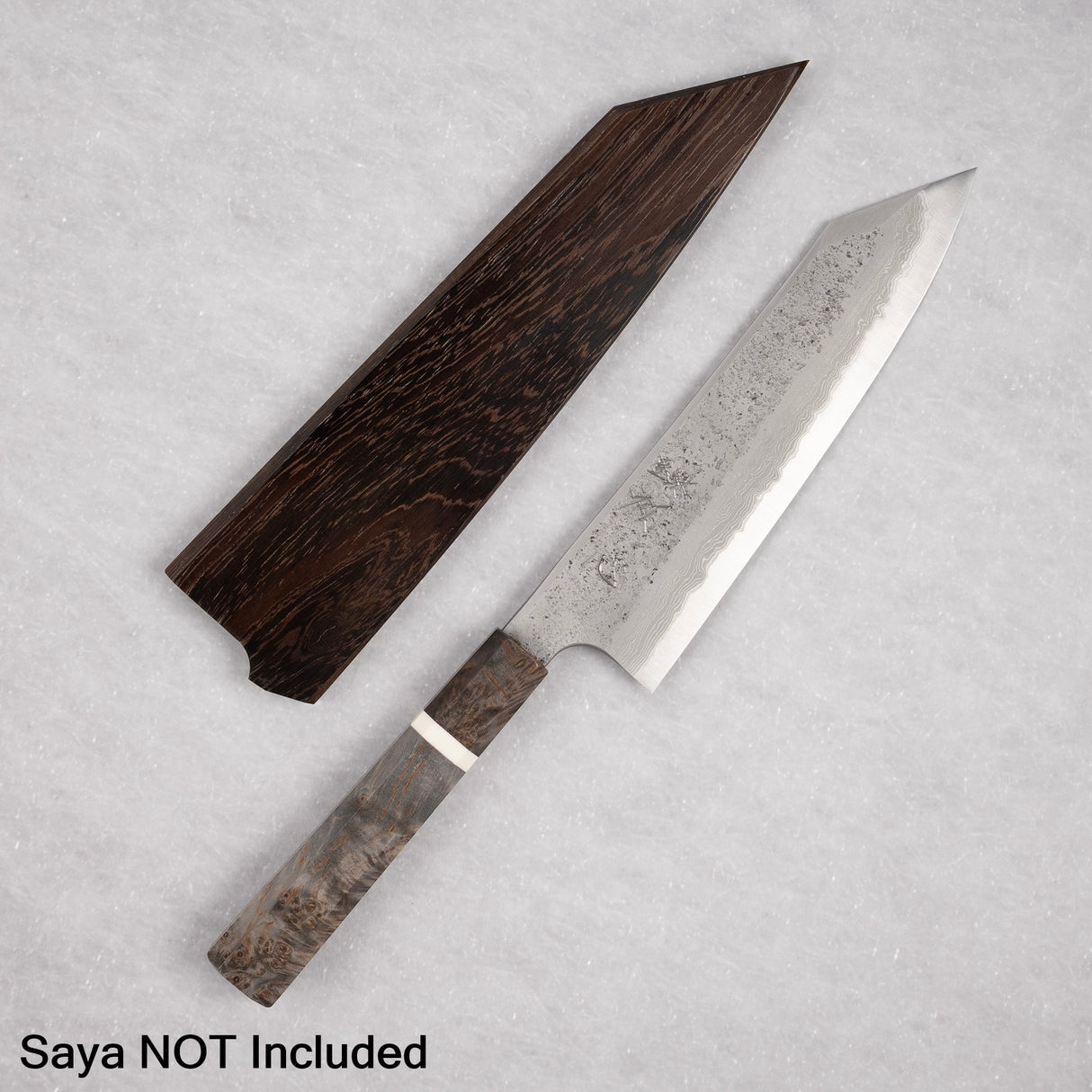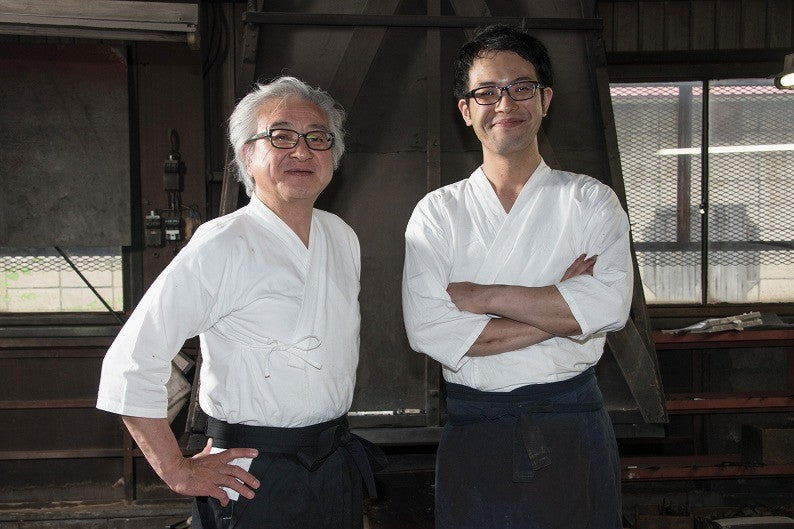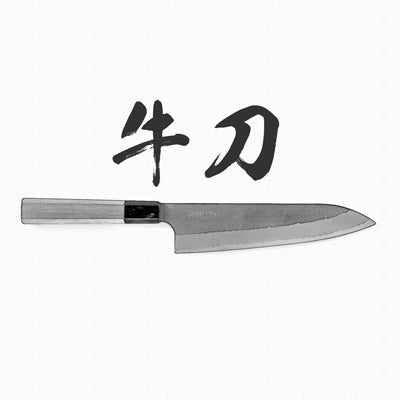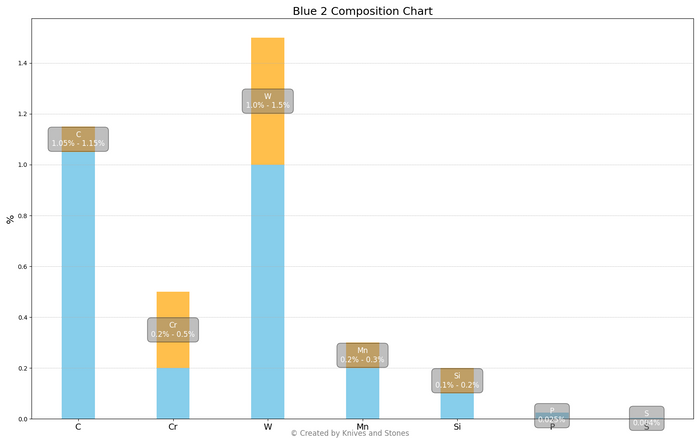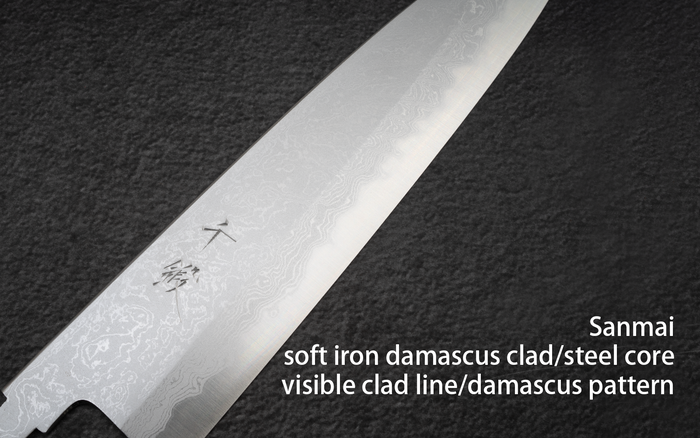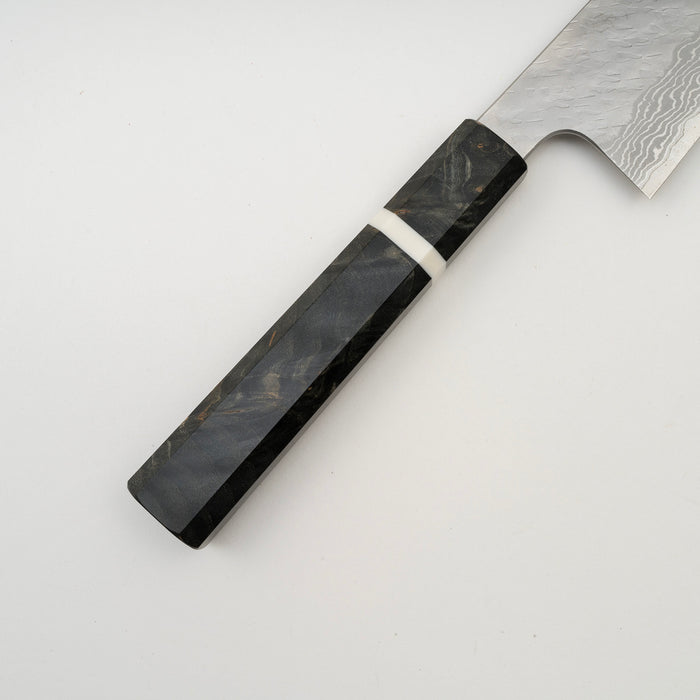Hatsukokoro | 庫存單位:
HSK-RS-B2DMNA-KGY210-BR
Nigara x Hatsukokoro Ryusui Blue 2 大馬士革梨子 K-tip 牛刀 210mm
售價
$8,699.00
正常價格
$10,221.00
單價
/
不可用
Nigara x Hatsukokoro Ryusui Blue 2 大馬士革梨子 K-tip 牛刀 210mm 已缺貨,一旦有貨就會出貨。
無法載入取貨日期
Detailed Specifications
| Line | 初心 流水藍鋼二號 |
| Profile | 牛刀 / 主廚刀 |
| Bevel Type | 雙斜面 |
| Weight | 154 g | 5.4 oz |
| Edge Length | 199 mm | 7 53/64″ |
| Heel Height | 49 mm | 1 59/64″ |
| Width @ Spine | 3.9 mm | 5/32″ |
| Width @ Mid | 2.6 mm | 7/64″ |
| Width @ 1cm from Tip | 0.9 mm | 1/32″ |
| Steel | 青二 / 青紙二號 | 碳鋼 |
| Blade Construction | Sanami - 軟鐵大馬士革夾層 |
| Hardness (HRC) | 61 - 63 |
| Surface Finish | 梨地 |
| Handle | 八角樺木瘤加間隔飾片 |
| Region | 青森 |
| Best for |
|

| Pros | Cons |
|
|
|
Care Instruction
- Don't cut hard things! Japanese knives are brittle so bone hacking is a NO NO!
- Wash with neutral detergent after use, and wipe dry;
- Please don't wash knife with dishwasher, it will damage the wood handle;
- Be careful not to leave the knife close to a heat source for a long time;
- It is a lot more dangerous to cut with a blunt knife than a sharp knife!
- It is best to sharpen a Japanese knife regularly on a waterstone. Error: Steel nature unknown





